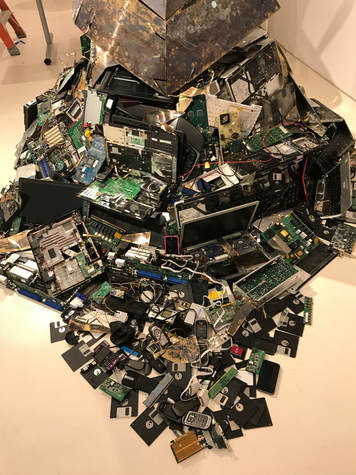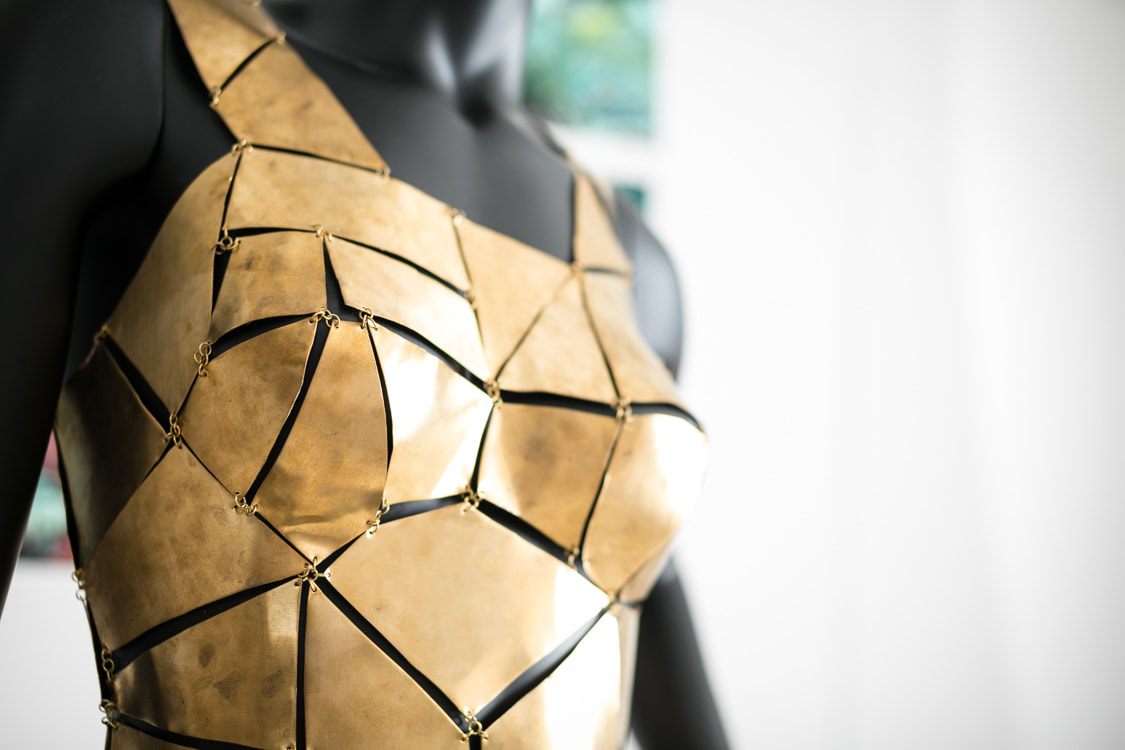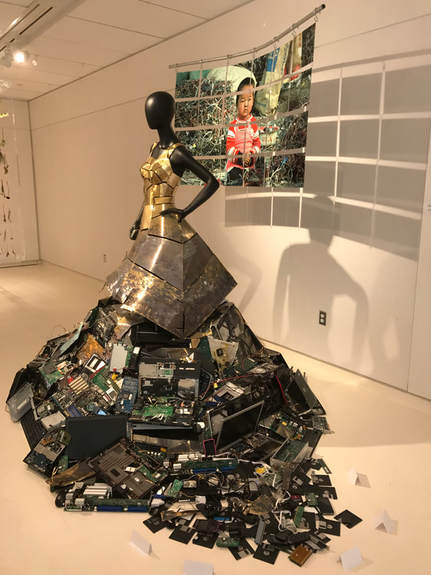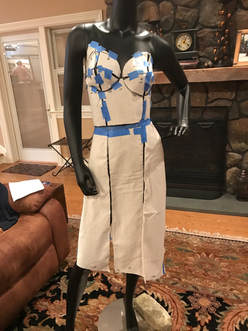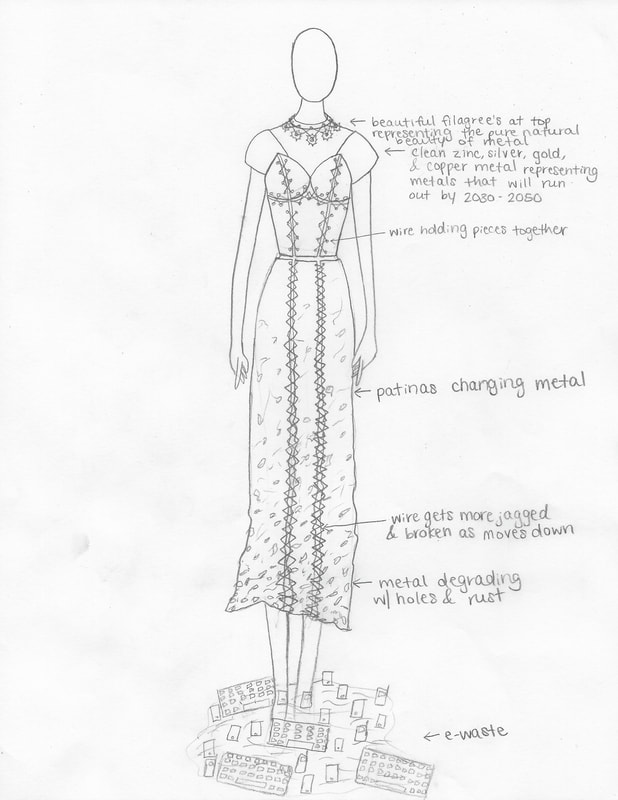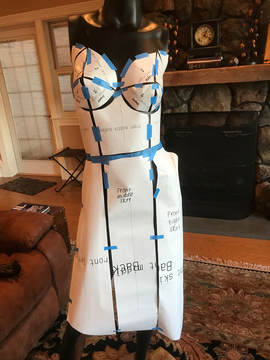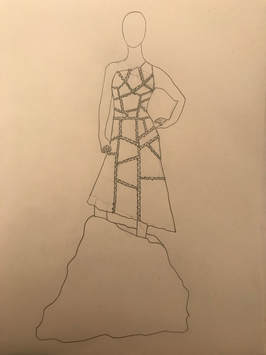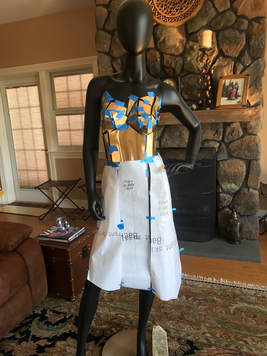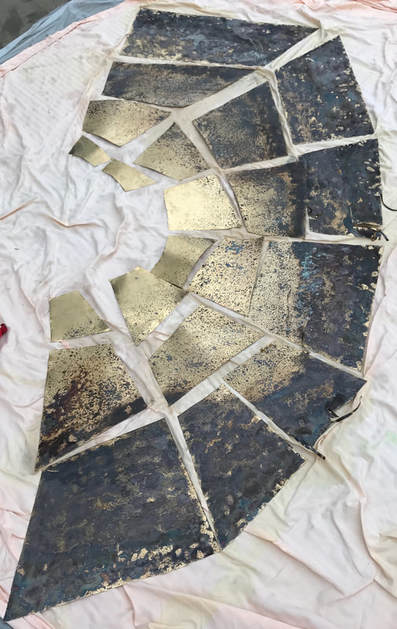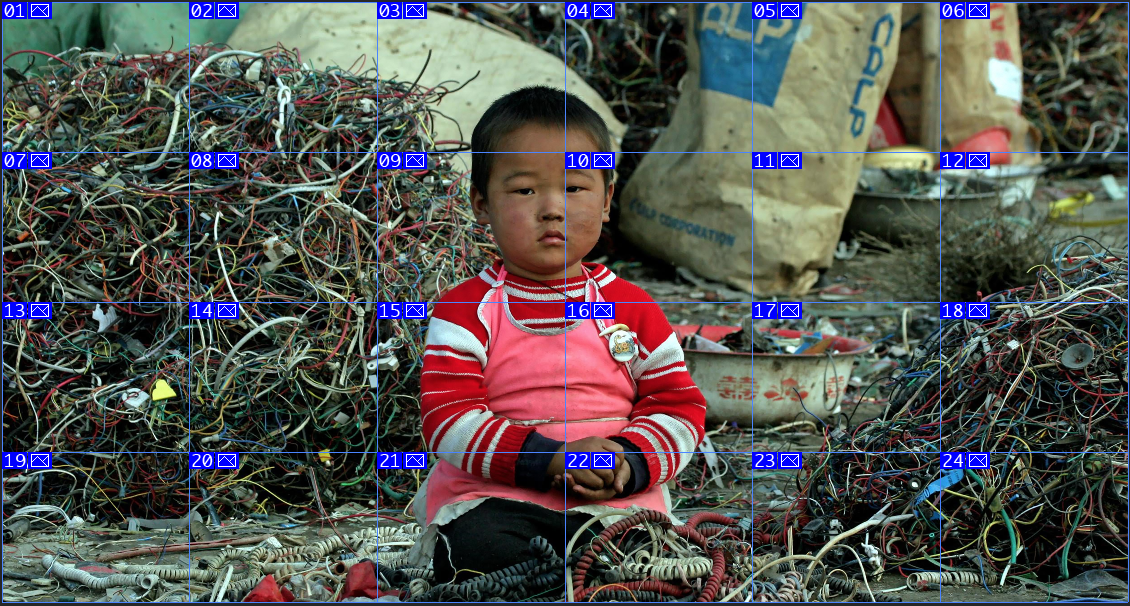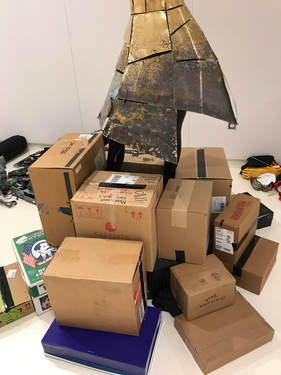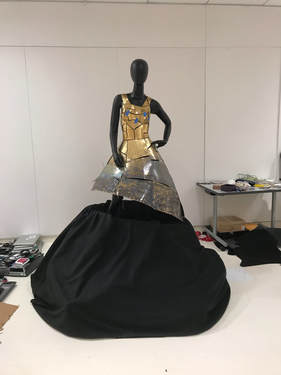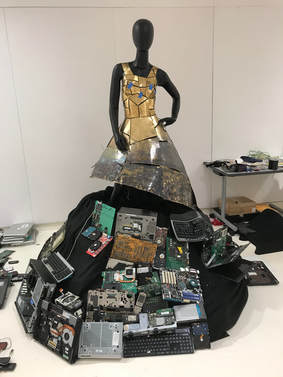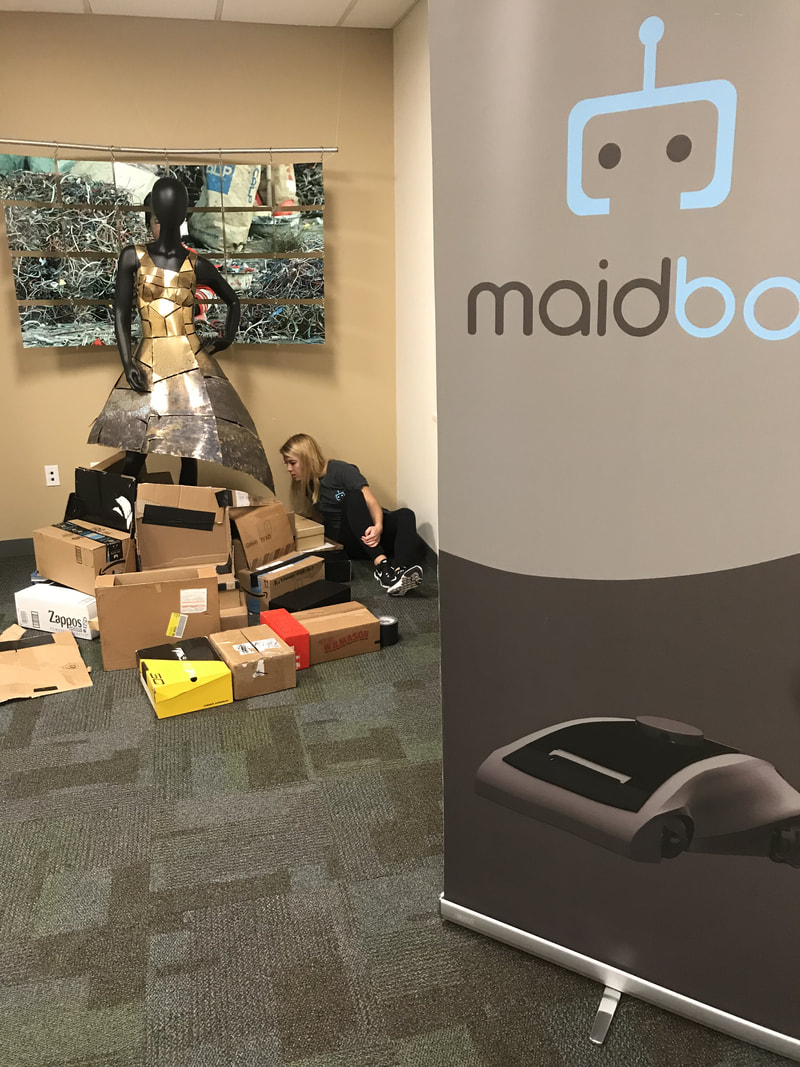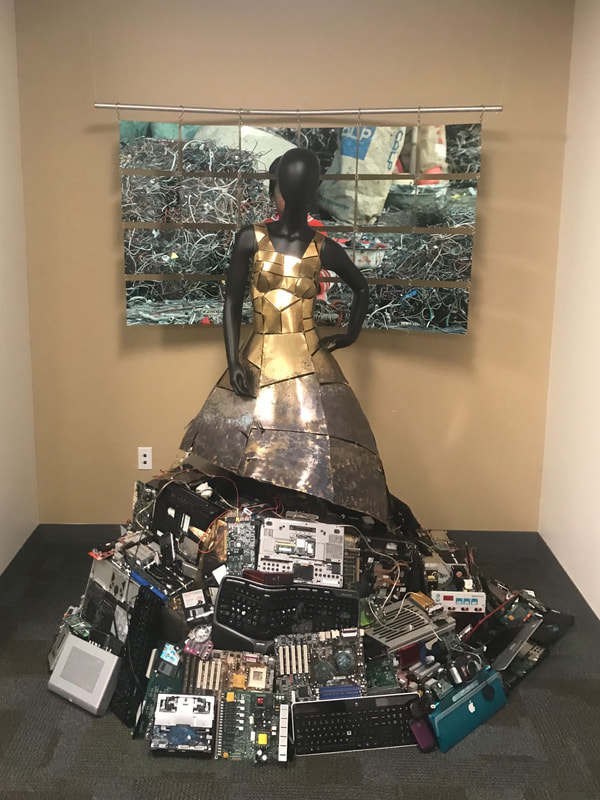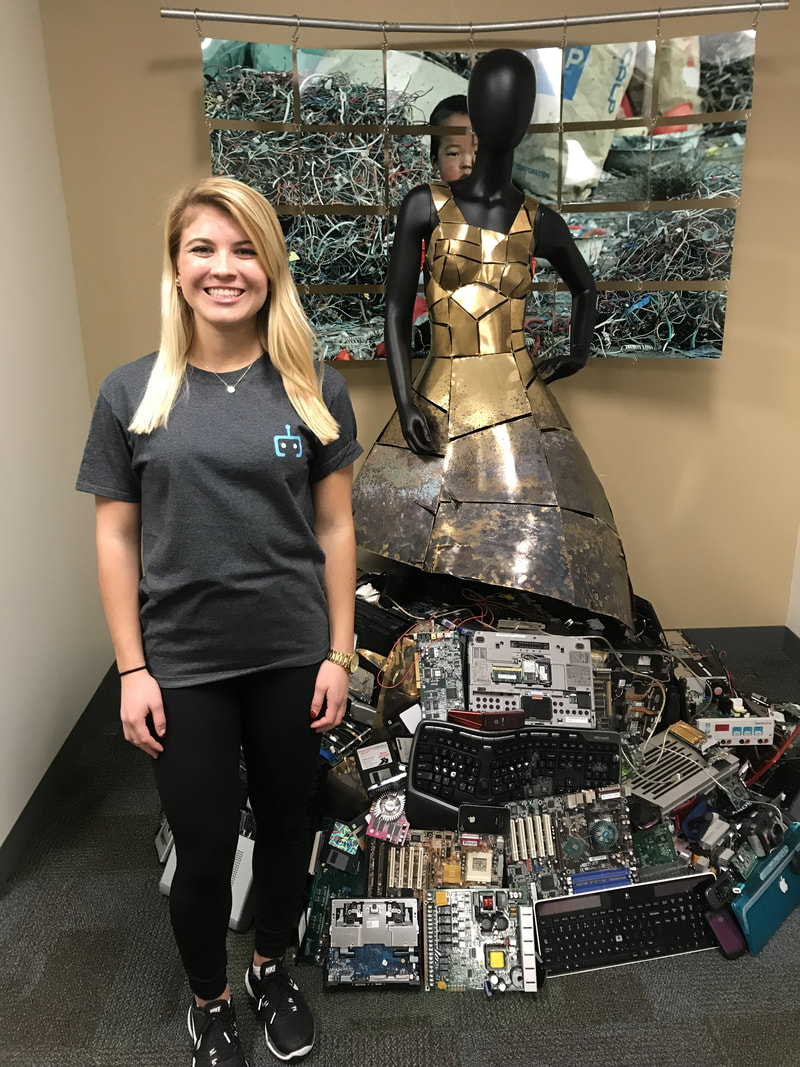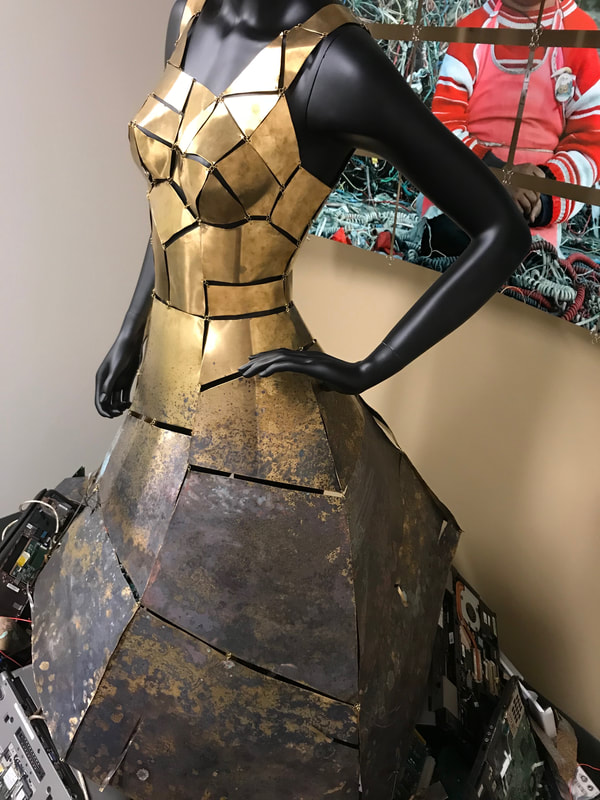The element metal is ubiquitous in the modern world; incorporated into the sleek smartphones and electronic devices that are always with us. Yet our passion for these beautiful objects tarnishes quickly, as more enticing models are marketed. At an increasing rate, electronics are replaced at the speed of the developing technologies that drive consumer demand for rapid change. In 2016, approximately 1.5 billion new mobile phones were sold worldwide, often replacing fully functional phones. Sadly, the Environmental Protection Agency has estimated that annually only 10% of all cell phones are recycled and only about 20% of all electronics are recycled, with the remainder dumped primarily in landfills. A recent United Nations report estimated that in 2014 alone, the world generated about 42 million metric tons of electronics waste.
Hidden Tarnish symbolizes the short life-cycle of precious metals from shine to tarnish as electronics become e-waste, releasing toxic metals into the environment. The hand-cut brass of this dress represents the shiny appeal of new electronics. The color mirrors the element gold, used in devices as a reliable, non-corrosive conductor of electricity. Metal links signify our connectedness to technology, while the chain on the back reveals bondage with our devices that we may try to hide. Progressively darker patinas depict the encroaching obsolescence of soon-to-be discarded electronics, followed by e-waste’s pollution leading to health hazards.
E-waste contains toxic metals including lead, mercury, cadmium, and beryllium, introduced into the environment through improper dismantling, disposal, or storage. Legally and illegally, the U.S. exports vast quantities of e-waste, mostly to Asia and Africa. There, impoverished women and children pick apart by hand or burn the e-waste to retrieve precious metals, exposing themselves to carcinogens and neurological damage. A most-innocent victim of e-waste is exemplified in this exhibit backdrop printed on metal of a Greenpeace International photograph of a toddler sitting in a pile of e-waste, awaiting her mother who is mining for metal in the waste.
Each of us can contribute to a solution. Before purchasing a new device, if we think carefully about whether we need to make a change or whether we are just responding to powerful marketing, we can likely extend the use of our devices. When we do give up a device, responsible disposal means trading it in, ideally to a re-use program, but at least to a recycler certified by e-Stewards or Responsible Recycling, nonprofit auditors of safety standards and legal exportation.
The need for recycling is urgent. One projection estimates that many metals will be completely stripped from the earth by 2050. Even in the smallest electronics, the EPA estimates that “for every million cell phones the U.S. recycles, we can recover 35,000 pounds of copper, 772 pounds of silver, 75 pounds of gold, and 33 pounds of palladium -- resources we won't have to dig up fresh from a mine.”
Hidden Tarnish symbolizes the short life-cycle of precious metals from shine to tarnish as electronics become e-waste, releasing toxic metals into the environment. The hand-cut brass of this dress represents the shiny appeal of new electronics. The color mirrors the element gold, used in devices as a reliable, non-corrosive conductor of electricity. Metal links signify our connectedness to technology, while the chain on the back reveals bondage with our devices that we may try to hide. Progressively darker patinas depict the encroaching obsolescence of soon-to-be discarded electronics, followed by e-waste’s pollution leading to health hazards.
E-waste contains toxic metals including lead, mercury, cadmium, and beryllium, introduced into the environment through improper dismantling, disposal, or storage. Legally and illegally, the U.S. exports vast quantities of e-waste, mostly to Asia and Africa. There, impoverished women and children pick apart by hand or burn the e-waste to retrieve precious metals, exposing themselves to carcinogens and neurological damage. A most-innocent victim of e-waste is exemplified in this exhibit backdrop printed on metal of a Greenpeace International photograph of a toddler sitting in a pile of e-waste, awaiting her mother who is mining for metal in the waste.
Each of us can contribute to a solution. Before purchasing a new device, if we think carefully about whether we need to make a change or whether we are just responding to powerful marketing, we can likely extend the use of our devices. When we do give up a device, responsible disposal means trading it in, ideally to a re-use program, but at least to a recycler certified by e-Stewards or Responsible Recycling, nonprofit auditors of safety standards and legal exportation.
The need for recycling is urgent. One projection estimates that many metals will be completely stripped from the earth by 2050. Even in the smallest electronics, the EPA estimates that “for every million cell phones the U.S. recycles, we can recover 35,000 pounds of copper, 772 pounds of silver, 75 pounds of gold, and 33 pounds of palladium -- resources we won't have to dig up fresh from a mine.”
The Process
First, I draped my proposed sketch on the mannequin. I instantly discovered that draping on a solid form is more difficult than draping on a stuffed form, especially because I could not pin into the form. After I digitized my patterns, I printed and cut them out, and placed them on the mannequin to check the fit. I had trouble with the curves of the mannequin and the metal, which obviously does not bend like fabric, paper, or cardboard.
Back to the drawing board
|
I realized that my design was going to require smaller-sized pieces to fit around the bust and the hips. Therefore, I decided to create a design in which all of the pieces were asymmetrical and increasing in size as progressing downward toward the pile of e-waste. I began recreating my pattern pieces one at a time and then hand cutting the pattern piece out in metal with my electric metal shears to perfectly conform with the curves of the body. |
All coming together at Jill Stuart Gallery, Cornell University
Maidbot, Inc., entrance foyer exhibit
Maidbot chose this as an example of human-computer interaction.

